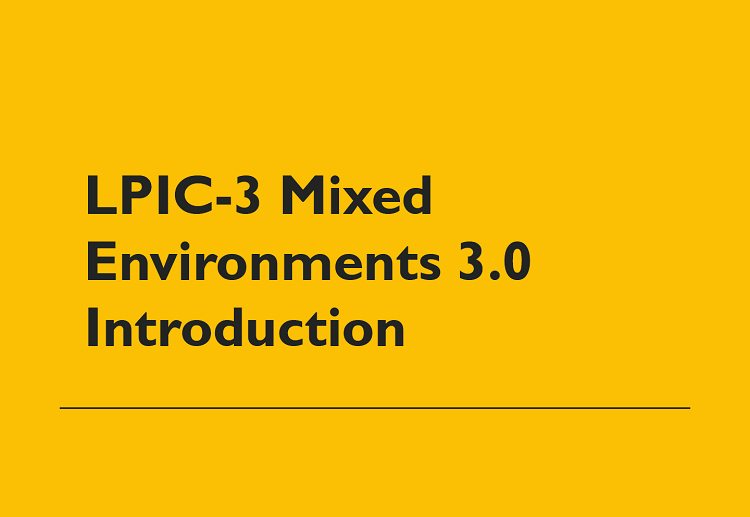Linux Professional Institute Certification (LPIC) is a globally recognized vendor-neutral certification program that validates the skills of Linux professionals. LPIC-3 is the highest level certification in the program, which covers enterprise-level Linux proficiency. One of the LPIC-3 specialties is Mixed Environments. In this article, we will explore what LPIC-3 Mixed Environments is, what it covers, and why it is important for IT professionals.
Overview of LPIC-3 Mixed Environments
LPIC-3 Mixed Environments is a specialty within the LPIC-3 certification program that covers the skills required to manage and maintain Linux systems in mixed environments. A mixed environment refers to an IT infrastructure that runs both Linux and non-Linux operating systems. This specialty aims to prepare IT professionals to work in a heterogeneous environment, where multiple operating systems are present.
Topics Covered in LPIC-3 Mixed Environments
The LPIC-3 Mixed Environments specialty covers various topics, including:
1. Linux and Windows Integration
This topic covers the skills required to integrate Linux and Windows systems in a networked environment. IT professionals will learn how to configure Samba, which is an open-source software that allows Linux systems to interact with Windows clients and servers.
2. Virtualization
Virtualization is a technique that allows multiple operating systems to run on a single physical machine. This topic covers the skills required to install, configure, and manage virtualization technologies, such as KVM, Xen, and VirtualBox.
3. High Availability
High availability refers to the ability of an IT system to remain operational even in the event of a hardware or software failure. This topic covers the skills required to configure and manage high availability solutions, such as cluster management software, load balancers, and storage area networks.
4. Storage Management
This topic covers the skills required to configure and manage various storage technologies, such as Network File System (NFS), Common Internet File System (CIFS), and Storage Area Networks (SANs).
5. Security
Security is a crucial aspect of any IT infrastructure. This topic covers the skills required to implement security measures on Linux systems, such as firewalls, intrusion detection and prevention systems, and access control mechanisms.
Why is LPIC-3 Mixed Environments Important?
In today's IT industry, mixed environments are becoming increasingly common. Many organizations have a hybrid IT infrastructure that includes both Linux and non-Linux operating systems. As a result, IT professionals need to be equipped with the skills required to work in such an environment. LPIC-3 Mixed Environments certification provides IT professionals with the necessary skills to manage and maintain Linux systems in mixed environments, making them valuable assets to their organizations.
Conclusion
LPIC-3 Mixed Environments is a specialty within the LPIC-3 certification program that covers the skills required to manage and maintain Linux systems in mixed environments. This specialty is essential for IT professionals who work in heterogeneous IT infrastructures that run both Linux and non-Linux operating systems. By obtaining the LPIC-3 Mixed Environments certification, IT professionals can demonstrate their skills and knowledge, making them valuable assets to their organizations.




0 comments:
Post a Comment